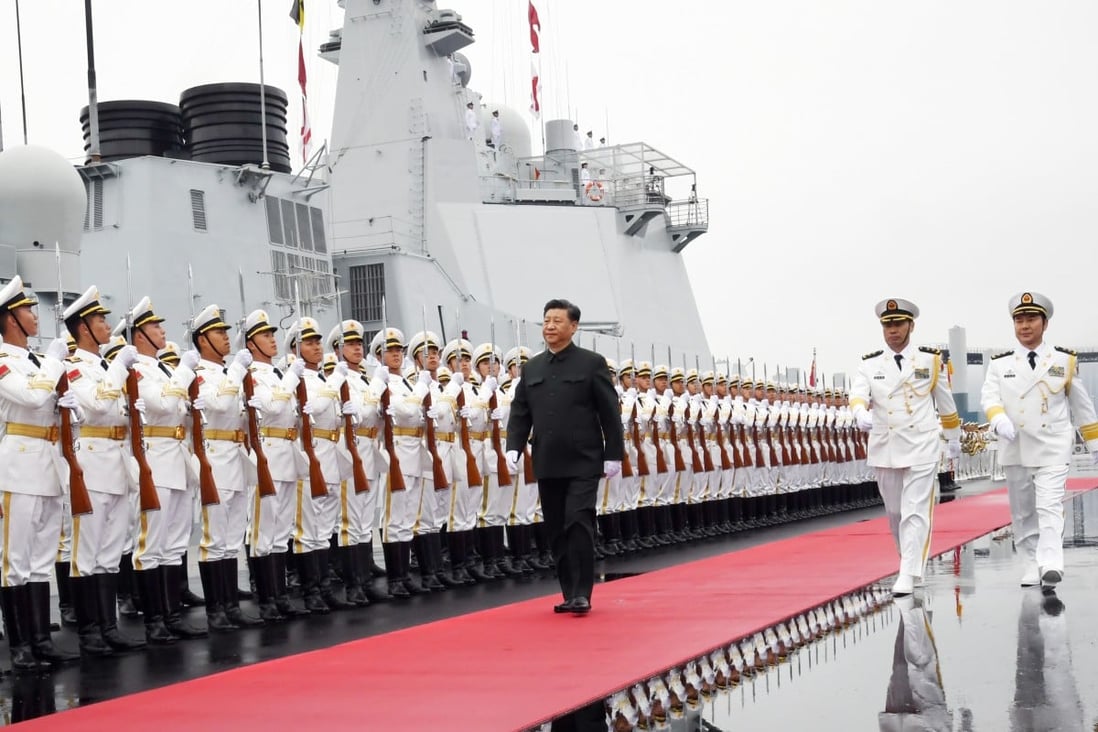Kristin Huang

The vice-captain of a warship has yet to complete a key training test, China’s military has revealed, in an indirect but rare acknowledgement of its shortage of highly skilled troops.
The admission, in a recent media report, highlights a core problem as China speeds up the modernisation of the People’s Liberation Army – a lack of hi-tech expertise limiting state-of-the-art equipment from use to its full extent, especially in the navy.
Chinese People’s Liberation Army releases propaganda navy training video ahead of 73rd anniversary
The vice-captain of the Zhangye – a Type 056 corvette – had not completed an important training assessment, military mouthpiece PLA Daily said in a report last week.
While the report did not specify when the assessment had been due, it said the delay was caused by either ship maintenance or scheduling conflicts.
The vice-captain, named in the report as Wang Yubing, is but one of several naval soldiers whose training has been held up.
This has left the PLA Navy short of adequately skilled personnel to operate newly enlisted ships and hi-tech hardware, a situation framed by the report as “equipment awaiting talent”.
“In recent years, as new warships have been commissioned and old ships retired, the problem of ‘equipment awaiting talent’ has become increasingly severe,” said the report, published on December 26.
“In particular, due to a training resources imbalance, it is difficult to organise the training of some commanders and key soldiers systematically; and it is difficult to organise the final training assessments as scheduled.”
Chinese navy practises aerial combat as it prepares its newest aircraft carrier for operations
Song Zhongping, a former instructor in the Chinese military, said naval personnel from retired ships had to be trained to familiarise themselves with the new ships that were more automated and information-based.
“Some veteran soldiers have to be trained as fresh recruits are to be ready for their new roles, such as commanders and key operators of more modern warships,” Song said.
The promotions of some officers have been held up as such training and assessment are required procedure, according to the report.
The revelation from the military mouthpiece was rare in that it not only confirmed the reportedly lingering problem of a shortage of well-trained personnel, but also specified the reasons that led to the talent shortage.
Ni Lexiong, a Shanghai-based military analyst, said the advanced weapons of the modern PLA Navy required higher levels of operating skills.
“For a modern navy, it’s imperative for its soldiers to understand and master skills like operating drones and cooperate with other forces on the ground and in the sky,” Ni said.
It was natural for China to have a talent deficit, as training struggled to keep pace with the swift modernisation of the military in recent years, he added.
President Xi Jinping initiated a sweeping modernisation of the PLA in 2015, and he has continued to emphasise its importance, in particular for the navy, now the world’s biggest.
China’s Shandong aircraft carrier sails in formation in the South China Sea. Photo: Handout
“The need to build up a strong navy has never been more pressing,” Xi, who is also chairman of the Central Military Commission, said in April 2018.
Delivering his work report to the five-yearly Communist Party national congress in October, Xi said the Chinese military must move faster to become a world-class fighting force.
Xi has also urged the Chinese military to recruit and train more talented professionals, who he said were “central” to helping the military achieve its key goals.
The race to modernise has seen China pour money into research and development of modern military equipment, including missiles, warships, drones and fighter jets.
Increased funding for the navy has driven a shipbuilding frenzy that expanded the Chinese fleet – which now includes three aircraft carriers and six Type 055 super destroyers in active service.
According to the Pentagon’s “2020 China Military Power Report”, the PLA has the biggest navy in the world with an overall battle force of about 350 surface ships and submarines, including over 130 major surface combatants.
The US Navy’s battle force consists of 293 ships.
China launches the Fujian, the PLA Navy’s 3rd aircraft carrier
The PLA Daily report said the navy had begun to rotate and coordinate training sessions to tackle the backlog and also make full use of the limited training ships.
Ni suggested that the military enlist more highly educated personnel and re-enlist retired soldiers if they were still fit.
“Hiring postgraduates [with their higher knowledge base] and veterans can shorten training periods and speed up talent education,” Ni said.
The Central Military Commission, the PLA’s highest commanding authority, urged such an approach last year.
In a document last May, titled “Opinions on accelerating the reform and development of military postgraduate education”, the commission called for fostering military personnel with advanced technological backgrounds and combat skills.
No comments:
Post a Comment